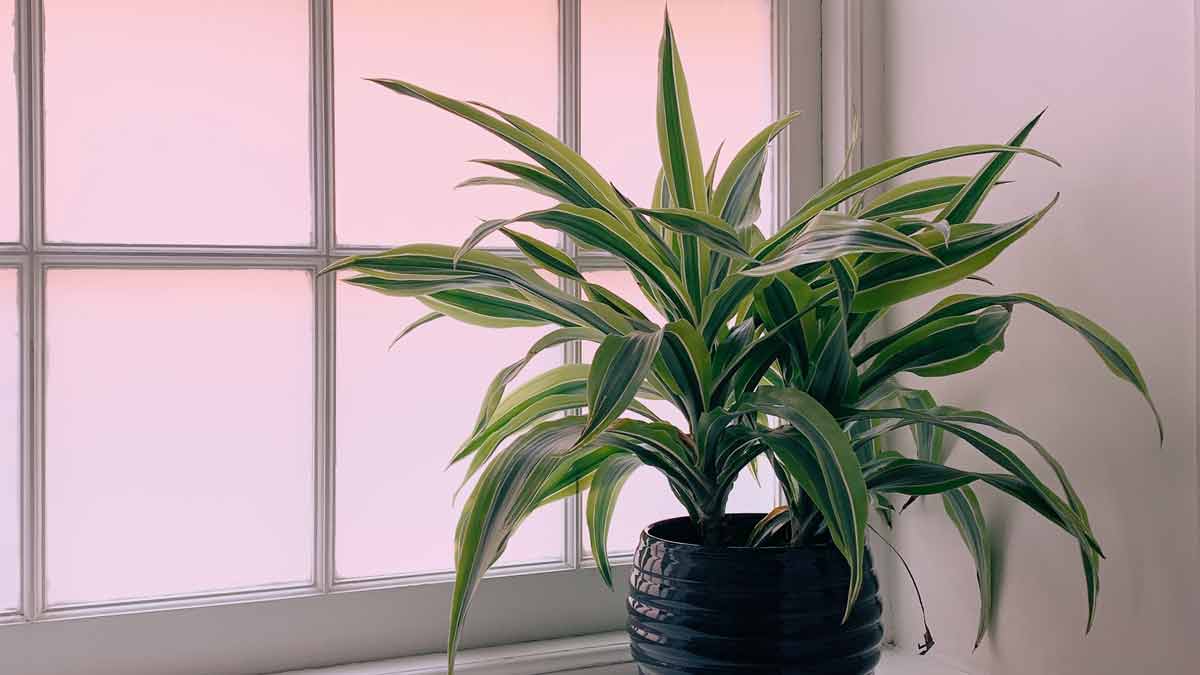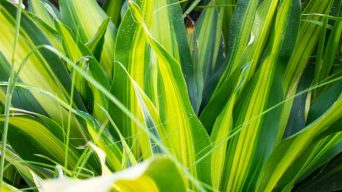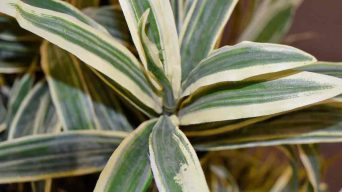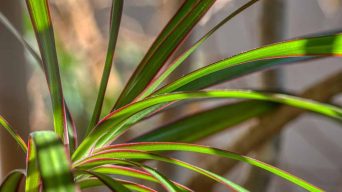A healthy dracaena has bright green leaves, upright stalks, and a strong root system without signs of rot or fungus. The soil should be moist, and the plant should receive proper light and nutrition. Any yellowing, browning, drooping, or wilting can indicate it needs to be cared for differently.
Regarding houseplants, dracaenas (Dragon tree) are some of the most popular choices.
These low-maintenance plants come in a wide range of shapes and sizes, which makes them ideal for filling any space in your home.
And while they don’t require much care, ensuring they’re healthy is still essential.
This article will show you the signs of a healthy dracaena and what to look for if your plant isn’t doing well.
Signs of a Healthy Dracaena
There are a few key things to look for when checking the health of your dracaena.
The most common signs of a healthy plant include the following:
Vibrant and Green Leaves
When you see a vibrant and green dracaena plant with healthy leaves, you can rest assured that your plant is in good health. This is because the rich colors of the leaves signify that the plant is adequately hydrated, receiving all the nutrients it needs, and free from any pests or diseases.
The beautiful green color of the leaves also indicates that your dracaena is making use of its chlorophyll, helping to make food through photosynthesis and providing energy for growth.
Strong Stems
For a dracaena plant to be truly healthy and thriving, you must focus on its stem’s health.
Strong stems are indicative of a plant that has been appropriately taken care of, as they can support the weight of the rest of the plant without buckling or breaking under pressure.
A strong stem also demonstrates that the plant receives all the nutrients it needs, including water, proper light, and humidity.
Thus, you can tell a lot about the health of your dracaena simply by observing its stems, so you should always ensure you are tending to this part of your plant carefully and attentively.
Frequent New Growth
One of the critical signs of a healthy dracaena plant is frequent new growth. This is because dracaenas are resilient tropical plants well adapted to periods of environmental stress, such as dryness and low humidity.
When you notice new shoots emerging from your dracaena, you can be confident that it is flourishing in its environment and will continue to thrive over time.
Such new growth is also indicative of vibrant root systems that can more effectively absorb water and nutrients from the soil, allowing your plant to access the resources it needs to stay healthy and strong.
So if you want to ensure that your dracaena thrives over the long term, pay close attention to any new growth you see, as this is a sure sign of a thriving plant.
Healthy Root System
A healthy root system is an essential part of a healthy dracaena plant.
The roots serve two main functions: a support system for the plant and an area for nutrient uptake. Without a strong network of healthy roots, the dracaena plant cannot thrive.
Additionally, the health of the roots is often an indicator of overall plant health.
When you see signs of leaf yellowing or other problems with the dracaena leaves or stems, you can look at the root system to help determine what might be causing these issues.
Healthy roots are typically white or cream-colored and have a firm, fleshy texture. If the roots are black or brown, this is usually an indication of root rot, which can be fatal to the plant.
Therefore, it’s essential to check on the health of your dracaena roots regularly and take action if you see any signs of problems.
Signs of an Unhealthy Dracaena
To ensure your dracaena plant is healthy, it’s essential to be on the lookout for any signs of problems.
Some common signs of an unhealthy dracaena include:
Yellowing Leaves
One common sign of an unhealthy dracaena plant is yellowing leaves. This can occur for several reasons, but it typically indicates that the plant lacks essential nutrients or is not receiving sufficient water.
To fix this issue, you should first assess your growing conditions. Ensure you provide your dracaena with appropriate sunlight, water, and fertilizer levels, and adjust your care regimen as needed.
If the yellowing persists, you may need to repot your dracaena into fresh potting soil.
Leaf Drop
Leaf drop is often viewed as a sign of an unhealthy dracaena plant and for a good reason.
When the leaves on your dracaena plant turn yellow or brown and fall off, it indicates something is wrong in the plant’s environment.
Factors such as poor soil quality, insufficient sunlight, or overwatering can all contribute to leaf drop, making it essential to monitor your dracaena plant’s health carefully.
You should consider some key factors to help you identify the cause of your dragon tree leaf drop and restore it to good health.
For example, you should ensure that you properly water your dracaena without overwatering it.
Additionally, you should check to see whether you are providing your plant with the ideal amount of sunlight for its specific needs and ensuring that it is placed in a well-ventilated location.
By keeping these things in mind and monitoring your plant closely, you can ensure that you provide it with optimal growth and vitality conditions.
Brown Spots on Leaves
Another common sign of an unhealthy dracaena plant is brown spots on the leaves. Several factors, including sunburn, nutrient deficiencies, or a disease can cause these spots.
If you notice brown spots on your dracaena’s leaves, you should look closely at the plant’s environment to see if anything has changed.
For example, if you recently moved your plant to a new location, the change in lighting conditions could be causing the brown spots.
Additionally, you should ensure you regularly water your dracaena and provide it with the appropriate amount of fertilizer, as a lack of these critical nutrients can also lead to brown spots on the leaves.
Stunted Growth
Another common sign of an unhealthy dracaena plant is stunted growth. If you notice that your dracaena is not growing as quickly as it once was or that its leaves are smaller than usual, this could be a sign of a problem.
Several factors can cause stunted growth in dracaenas, including inadequate lighting, poor soil quality, and a lack of nutrients.
To fix this issue, you should assess your dracaena’s environment to see if anything has changed.
If you recently moved your plant to a new location, for example, the change in lighting could be causing stunted growth.
Additionally, you should ensure you regularly water your dracaena and provide it with the appropriate amount of fertilizer.
If you have been doing these things and your dracaena’s growth has slowed, you may need to repot the plant into fresh potting soil.
Leggy Growth
Leggy growth is another common sign of an unhealthy dracaena plant.
If you notice that your dracaena’s leaves are spaced far apart on the stem or that the stem is significantly longer than normal, this could be a sign that the plant is not receiving enough light.
To fix this issue, you should move your dracaena to a location where it will receive more light.
Dracaenas need bright indirect light to thrive, so choose a spot where your plant will receive plenty of light without being exposed to direct sunlight.
Curling Leaves
If you notice that the leaves on your dracaena are curling, this could signify a problem. Several factors can cause curling leaves, but lack of water is the most common culprit.
If your dracaena’s leaves are curling, you should check to see if the plant needs to be watered.
To do this, you can stick your finger into the soil to see if it is dry. If the soil is dry, you should water your dracaena immediately.
In addition to watering your plant more frequently, you should ensure it provides the appropriate humidity.
Dracaenas prefer high humidity levels, so you may need to mist your plant regularly or place it on a pebble tray to increase the humidity around it.
Scorched Leaves
If you notice that the leaves on your dracaena are scorched or discolored, this could be a sign of a problem. Scorched leaves are usually caused by too much direct sunlight or heat.
If your dracaena’s leaves are scorched, you should move the plant to a location where it will receive less light.
Additionally, you should make sure the temperature around your plant is not too hot. Dracaenas prefer cool temperatures and will not thrive in hot climates.
They thrive in temperatures between 65 and 75 degrees Fahrenheit.
How To Keep Your Dracaena Healthy
Now that you know some common signs of an unhealthy dracaena plant, you can take steps to keep your plant healthy.
Here are a few tips:
- Dracaenas need bright indirect light to thrive, so choose a spot where your plant will receive plenty of light without being exposed to direct sunlight.
- Dracaenas prefer high humidity levels, so you may need to mist your plant regularly or place it on a pebble tray to increase the humidity around it.
- Dracaenas need to be watered regularly, but they should not be allowed to sit in water. Be sure to empty any water collected in the saucer under your plant.
- Dracaenas should be fertilized monthly during the spring and summer and every other month during the fall and winter.
- Dracaenas prefer cool temperatures and will not thrive in hot climates. They thrive in temperatures between 65 and 75 degrees Fahrenheit.
- Dracaenas should be repotted every two to three years. Be sure to choose a pot slightly larger than the current one.
Following these tips, you can keep your dracaena plant healthy and looking its best.
Final Thoughts
When it comes to houseplants, a few key indicators can tell you if your plant is healthy or not.
By checking your plant regularly, you can catch problems early and take steps to correct them.
In general, a healthy dracaena should have the following:
- Bright, green leaves that are free of spots or discoloration
- A strong, upright stem
- Firm, green roots
- Frequent new growth
To keep your dracaena healthy, provide it with bright indirect light, high humidity levels, and the appropriate amount of water and fertilizer.
Additionally, you should repot your plant every two to three years.
Following these tips can keep your dracaena happy and healthy for many years.







